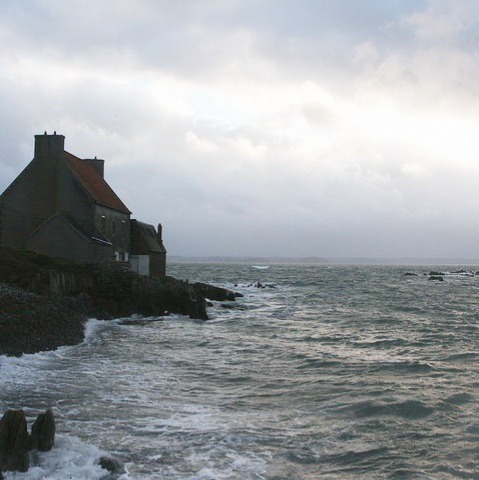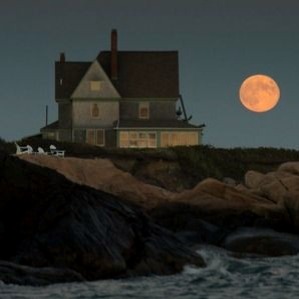Home By The Sea.. .








home by the sea.. .
More Posts from Stibnium and Others
















the man-god: demons by fyodor dostoyevksy
Bonsoir! Can you suggest some books on ecofeminism, that you've read or have on your to-read list?
I would suggest:
Staying Alive: Women, Ecology and Development, Vandana Shiva
Visionary Women: How Rachel Carson, Jane Jacobs, Jane Goodall, and Alice Waters Changed Our World, Andrea Barnet
Practising Feminist Political Ecologies: Moving Beyond the “Green Economy”, ed. Wendy Harcourt & Ingrid Nelson
Françoise d’Eaubonne et l’écoféminisme, Caroline Goldblum (I believe Françoise d’Eaubonne coined the term “ecofeminism” in her essay Le féminisme ou la mort—one chapter of Carolyn Merchant’s Ecology provides a translation of some of d’Eaubonne’s thoughts)
Small Town, Big Oil: The Untold Story of the Women Who Took on the Richest Man in the World—And Won, David W. Moore
Ecofeminism, Maria Mies
Women and the Environment: Crisis and Development in the Third World, ed. Sally Sontheimer
Counting for Nothing: What Men Value and What Women Are Worth, Marilyn Waring (the chapter on war and the high economic value men have ascribed to death is particularly good)
Earth follies : coming to feminist terms with the global environmental crisis, Joni Seager
Women Who Dig: Farming, Feminism and the Fight to Feed the World, Trina Moyles
(The bolded links redirect to OpenLibrary for the books that are available there)
On my to-read list:
Eco-Sufficiency and Global Justice: Women Write Political Ecology, Ariel Salleh
Unbowed, Wangari Maathai (I reblogged this article about her the other day, which made me want to check out the memoir she wrote)
Feminism and Ecology, Mary Mellor
Beyond Mothering Earth: Ecological Citizenship and the Politics of Care, Sherilyn McGregor (I’m interested in her critical discussion of how women caring about the environment is often described in maternal, rather than political, terms)
The Subsistence Perspective: Beyond the Globalised Economy, Veronika Bennholdt-Thomsen & Maria Mies
I would also recommend Naomi Klein’s books; although she writes about political ecology rather than ecofeminism, at least she doesn’t forget about women in her books the way male environmentalists often do. Some of the male-authored books on the environment that gave me food for thought lately include Arran Stibbe’s Ecolinguistics: Language, Ecology and the Stories We Live By, Paul Kingsnorth’s Confessions of a Recovering Environmentalist, David Owen’s The Conundrum, and Ozzie Zehner’s Green Illusions, and only the latter took notice of the fact that women’s subjugation is relevant in climate change discussions—his book contains a chapter on women’s rights and he is the only one who points out that one essential factor to create a ‘green’ and sustainable society is giving women and girls power to make decisions—over their own bodies, as well as in social, economic and political spheres.
I also appreciate that his book revolves around the idea that there is too much of a focus in today’s environmentalism on producing new technology and more (but ‘clean’) energy (wind, solar, biofuels, carbon-sequestrating gadgets…)— when, instead of attempting to create the kind of technology that will get our society-as-it-is through the climate crisis, we ought to create the kind of society that has a better chance of adapting to & mitigating it. In other words, realistic and efficient climate activism should focus on women’s rights, antimilitarism, improving democratic institutions and health care, combating consumerism and wealth disparities—things that often don’t register as climate activism, although they have a better chance of improving environmental issues and helping us face related crises than a fixation on potential scientific or technological miracles. I have found in my reading that it is surprisingly rare to find this holistic approach to environmentalism outside of ecofeminist writings.

légende noire: archive project
In the immediate aftermath of the events of Thermidor, both the actors and spectators of these events sought to give meaning to what had just happened ; à chaud, a new imaginary was taking shape, centred around the person of Robespierre: his légende noire, which would impose itself over the next decades, slowly began to emerge in numerous speeches, proclamations, pamphlets etc. This “black legend”, which drew on the tropes and motifs that had characterised earlier attacks on Robespierre, would later acquire some degree of coherence, but at the time of its birth, it was still widely heterogeneous and, at times, even contradictory.
In the course of this research project, I have compiled some of the most influential speeches, writings and images that were published during or immediately after the events of 9 / 10 Thermidor, and which, in some cases, came to shape Robespierre’s légende noire as we know it today.
protocols, speeches, reports & proclamations
Session of 9 Thermidor at the National Convention
Report on the conspiracy against the national representation, plotted by Robespierre, Couthon, Saint-Just, Lebas &c. (9 Thermidor)
Proclamation of the National Convention (9 Thermidor)
Léonard Bourdon’s intervention at the Convention (10 Thermidor)
Report of the Committees of Public Safety & General Security on the “conspiracy of Robespierre etc.” (10 Thermidor)
Barère, au nom du comité de salut public (11 Thermidor)
Barère’s report on the reorganisation of the Committees (14 Thermidor)
Barras’ speech on the journées of Thermidor (27 Thermidor)
pamphlets & other writings
Robespierre’s Tail (Méhée de La Touche)
Robespierre peint par lui-même […] (Laurent Lecointre)
On Robespierre’s conspiracy (Rouget de Lisle)
Véritable portrait de Catilina Robespierre (Jean Joseph Dussault)
Portrait of Robespierre (Merlin de Thionville)
La journée du 9 thermidor (André Pépin Bellement)
On the fall of Robespierre and his accomplices (C. Dejean)
Le front de Robespierre, et de sa clique […] (Baraly)
Execrable Portraits of the traitor Robespierre […] (J. J. Dussault)
Horrible conspiration formée, pour porter Robespierre à la royauté (Anonymous)
Facts collected in the last moments of Robespierre and of his faction, from 9 to 10 Thermidor (Anonymous)
Vie secrette, politique et curieuse de M. J. Maximilien Robespierre […] (L. Duperron)
Fréron’s notes on Robespierre
engravings & medallions
IX Thermidor Year II (Charles Monnet)
Thermidorian medallion from Lyon (Anonymous)
Act of Justice from 9 to 10 Thermidor (Viller)
M. J. Maximilien Robespierre: nicknamed the modern Catiline, executed on 10 Thermidor Year 2 of the Republic (Anonymous)
The Triumvir Robespierre (Jean Joseph François Tassaert)
Robespierre guillotining the executor (Anonymous)
Triumphant Equality or The Punished Triumvirate (Villeneuve)
The Government of Robespierre (Anonymous)
The French People, or Robespierre’s System (A. Chataignier)
What do you think, citizens? Feel free to add things!
Seguir leyendo
op is an augur from ancient rome
Weather is not small talk. It's big talk. It's the only thing worth talking about
knowing thyself is the way to know the universe and viceversa: symmetry it's the constant
-
 m3ddlingkids reblogged this · 1 week ago
m3ddlingkids reblogged this · 1 week ago -
 pensieri-in-trappola liked this · 1 week ago
pensieri-in-trappola liked this · 1 week ago -
 seasaltspots reblogged this · 1 week ago
seasaltspots reblogged this · 1 week ago -
 jisert23 liked this · 2 weeks ago
jisert23 liked this · 2 weeks ago -
 wecanstealthiscar reblogged this · 2 weeks ago
wecanstealthiscar reblogged this · 2 weeks ago -
 olivinewaves reblogged this · 2 weeks ago
olivinewaves reblogged this · 2 weeks ago -
 shadow-maven reblogged this · 3 weeks ago
shadow-maven reblogged this · 3 weeks ago -
 ajthepeach liked this · 3 weeks ago
ajthepeach liked this · 3 weeks ago -
 pimpedcapella liked this · 1 month ago
pimpedcapella liked this · 1 month ago -
 bugkinnie liked this · 1 month ago
bugkinnie liked this · 1 month ago -
 stroberrysblog liked this · 1 month ago
stroberrysblog liked this · 1 month ago -
 vokunvahdin reblogged this · 1 month ago
vokunvahdin reblogged this · 1 month ago -
 officialtrashbin reblogged this · 1 month ago
officialtrashbin reblogged this · 1 month ago -
 door88 liked this · 2 months ago
door88 liked this · 2 months ago -
 gl0wpatch reblogged this · 2 months ago
gl0wpatch reblogged this · 2 months ago -
 warlockwife reblogged this · 2 months ago
warlockwife reblogged this · 2 months ago -
 insearch0fthegreatmanifest0 liked this · 2 months ago
insearch0fthegreatmanifest0 liked this · 2 months ago -
 pinetreeanarchism reblogged this · 2 months ago
pinetreeanarchism reblogged this · 2 months ago -
 oxfordsonnets reblogged this · 2 months ago
oxfordsonnets reblogged this · 2 months ago -
 deehya liked this · 2 months ago
deehya liked this · 2 months ago -
 what-does-the-moose-say liked this · 3 months ago
what-does-the-moose-say liked this · 3 months ago -
 witchyforest liked this · 4 months ago
witchyforest liked this · 4 months ago -
 thatwasanorder liked this · 4 months ago
thatwasanorder liked this · 4 months ago -
 sleepy-sprout reblogged this · 4 months ago
sleepy-sprout reblogged this · 4 months ago -
 lunaenamour reblogged this · 4 months ago
lunaenamour reblogged this · 4 months ago -
 plague-on-the-run reblogged this · 4 months ago
plague-on-the-run reblogged this · 4 months ago -
 pastel--lilac liked this · 4 months ago
pastel--lilac liked this · 4 months ago -
 caffeinsanity liked this · 4 months ago
caffeinsanity liked this · 4 months ago -
 hiruhiko reblogged this · 5 months ago
hiruhiko reblogged this · 5 months ago -
 acemaneazu liked this · 5 months ago
acemaneazu liked this · 5 months ago -
 bblueveryday reblogged this · 5 months ago
bblueveryday reblogged this · 5 months ago -
 bblueveryday liked this · 5 months ago
bblueveryday liked this · 5 months ago -
 tortellin0 reblogged this · 5 months ago
tortellin0 reblogged this · 5 months ago -
 stop-the-skeksis liked this · 5 months ago
stop-the-skeksis liked this · 5 months ago -
 tortellin0 liked this · 5 months ago
tortellin0 liked this · 5 months ago -
 leucisticpuffin liked this · 5 months ago
leucisticpuffin liked this · 5 months ago -
 camille-lachenille liked this · 5 months ago
camille-lachenille liked this · 5 months ago -
 dreamingthroughthenoise reblogged this · 5 months ago
dreamingthroughthenoise reblogged this · 5 months ago -
 sublimecherryblossomobservation liked this · 5 months ago
sublimecherryblossomobservation liked this · 5 months ago -
 morningtears liked this · 5 months ago
morningtears liked this · 5 months ago -
 angrykettle reblogged this · 6 months ago
angrykettle reblogged this · 6 months ago -
 wazouchi liked this · 6 months ago
wazouchi liked this · 6 months ago -
 ithums reblogged this · 6 months ago
ithums reblogged this · 6 months ago -
 ignismai liked this · 6 months ago
ignismai liked this · 6 months ago -
 pixel-machine reblogged this · 6 months ago
pixel-machine reblogged this · 6 months ago -
 marlonorlando reblogged this · 6 months ago
marlonorlando reblogged this · 6 months ago -
 bellightsrevival reblogged this · 6 months ago
bellightsrevival reblogged this · 6 months ago -
 theresplacestogo liked this · 6 months ago
theresplacestogo liked this · 6 months ago

overgrown bat, occultist, alchemist, aspiring potion maker, least but not last, poet.
172 posts
























